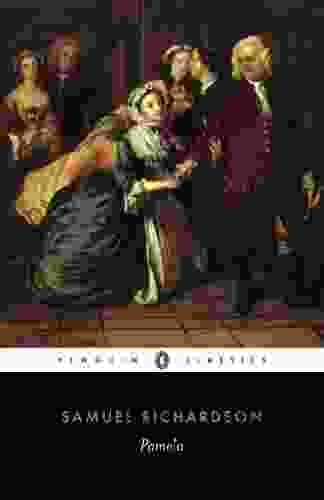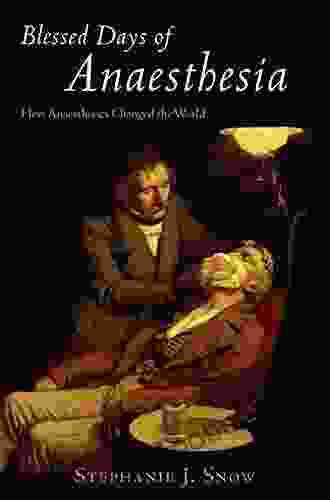Fraternal Societies and Social Services: A Legacy of Community and Welfare

An to Fraternal Societies and Their Role in History
Fraternal societies have played a significant role in shaping the social landscape of the United States. Emerging in the late 19th century, these organizations provided a sense of community and belonging, particularly for immigrants and working-class Americans. Beyond their social functions, fraternal societies also assumed a crucial role in offering essential social services to their members and their communities.
4.4 out of 5
| Language | : | English |
| File size | : | 1621 KB |
| Text-to-Speech | : | Enabled |
| Screen Reader | : | Supported |
| Enhanced typesetting | : | Enabled |
| Word Wise | : | Enabled |
| Print length | : | 336 pages |
This article will delve into the historical and social significance of fraternal societies in the United States. We will explore the motivations behind their establishment, their diverse membership, and the wide range of social services they provided. By shedding light on this important aspect of American history, we can better understand the profound impact these organizations have had on our society.
The Genesis of Fraternal Societies in the United States
The roots of fraternal societies in the United States can be traced back to the mid-19th century. As the country underwent rapid industrialization and urbanization, many individuals and families found themselves uprooted from their traditional support systems. In this context, fraternal societies emerged as a source of social and economic stability for people who felt isolated or vulnerable in the face of these societal changes.
The first fraternal society in the United States, the Independent Free Download of Odd Fellows, was established in Baltimore, Maryland, in 1819. Over the following decades, a plethora of other fraternal organizations emerged, catering to specific ethnic, occupational, and religious groups. By the end of the 19th century, fraternal societies had become a ubiquitous presence in American society, with millions of members from all walks of life.
The Diverse Membership of Fraternal Societies
One of the remarkable aspects of fraternal societies was their diverse membership. These organizations were not limited to any particular social or economic class. While some societies, such as the Freemasons, had a primarily elite membership, others, such as the Knights of Columbus, were predominantly working-class. There were also societies that catered specifically to women, such as the Eastern Star, and to African Americans, such as the Prince Hall Masons.
This diversity of membership allowed fraternal societies to play a vital role in bridging social divides and fostering a sense of unity among different segments of American society. They provided a space where people from different backgrounds could come together, interact, and build relationships that transcended social boundaries.
The Broad Spectrum of Social Services Provided by Fraternal Societies
In addition to their social functions, fraternal societies also offered a wide range of social services to their members and their communities. These services varied depending on the specific society, but they generally included:
- Death Benefits: Provided financial assistance to families who had lost a member.
- Disability Benefits: Offered support to members who were unable to work due to illness or injury.
- Retirement Benefits: Helped members plan for their financial security in their later years.
- Educational Scholarships: Supported members and their families in pursuing educational opportunities.
- Healthcare: Established clinics and hospitals to provide affordable healthcare services to members and their families.
These social services played a critical role in improving the lives of millions of Americans during a time when government-sponsored social programs were limited. They provided a safety net for individuals and families who faced financial hardship, illness, or other life challenges.
The Decline of Fraternal Societies in the 20th Century
While fraternal societies continued to thrive in the early 20th century, their numbers began to decline after World War II. Several factors contributed to this decline, including:
- The rise of government-sponsored social welfare programs: As the government assumed a greater role in providing social services, the need for fraternal societies diminished.
- Changes in social norms: The post-war years saw a shift in social values, with people becoming less interested in traditional forms of social organization.
- The aging of the membership: Many fraternal societies had an aging membership, which made it difficult to attract new members and maintain a vibrant organization.
However, despite their decline, fraternal societies continue to exist today, albeit with a smaller membership base. They have adapted to changing times by offering more flexible membership options, expanding their social services, and embracing technology to reach a wider audience.
Lessons from the History of Fraternal Societies
The history of fraternal societies offers valuable lessons about the importance of community support and social services. These organizations played a crucial role in providing a safety net for Americans in need during a time when government assistance was limited. They also fostered a sense of unity and belonging among diverse segments of society.
While the role of fraternal societies has evolved over time, the principles of mutual aid and community support that they embodied remain relevant today. As we face new social challenges, we can draw inspiration from the legacy of these organizations and work together to create a more supportive and equitable society for all.
4.4 out of 5
| Language | : | English |
| File size | : | 1621 KB |
| Text-to-Speech | : | Enabled |
| Screen Reader | : | Supported |
| Enhanced typesetting | : | Enabled |
| Word Wise | : | Enabled |
| Print length | : | 336 pages |
Do you want to contribute by writing guest posts on this blog?
Please contact us and send us a resume of previous articles that you have written.
 Book
Book Novel
Novel Page
Page Chapter
Chapter Text
Text Story
Story Genre
Genre Reader
Reader Library
Library Paperback
Paperback E-book
E-book Magazine
Magazine Newspaper
Newspaper Paragraph
Paragraph Sentence
Sentence Bookmark
Bookmark Shelf
Shelf Glossary
Glossary Bibliography
Bibliography Foreword
Foreword Preface
Preface Synopsis
Synopsis Annotation
Annotation Footnote
Footnote Manuscript
Manuscript Scroll
Scroll Codex
Codex Tome
Tome Bestseller
Bestseller Classics
Classics Library card
Library card Narrative
Narrative Biography
Biography Autobiography
Autobiography Memoir
Memoir Reference
Reference Encyclopedia
Encyclopedia Elizabeth Wilder
Elizabeth Wilder Emily Kerr
Emily Kerr Angelo Codevilla
Angelo Codevilla Neil Fabricant
Neil Fabricant Joe Hill
Joe Hill Marc William Palen
Marc William Palen Adolph Barr
Adolph Barr Tyler Wentzel
Tyler Wentzel Charles C Bolton
Charles C Bolton Bruce Zortman
Bruce Zortman Em Claire
Em Claire Fred Bolder
Fred Bolder Elizabeth R Nugent
Elizabeth R Nugent Joy Hakim
Joy Hakim Carole Mortimer
Carole Mortimer Daniel J Sharfstein
Daniel J Sharfstein C S Lewis
C S Lewis Alexia Kannas
Alexia Kannas Izabella Brooks
Izabella Brooks Arie Perliger
Arie Perliger
Light bulbAdvertise smarter! Our strategic ad space ensures maximum exposure. Reserve your spot today!

 Cade SimmonsPamela: Virtue Rewarded: A Literary Masterpiece that Changed the Course of...
Cade SimmonsPamela: Virtue Rewarded: A Literary Masterpiece that Changed the Course of... Ian MitchellFollow ·3k
Ian MitchellFollow ·3k Brody PowellFollow ·7.5k
Brody PowellFollow ·7.5k Aleksandr PushkinFollow ·13.5k
Aleksandr PushkinFollow ·13.5k Gerald ParkerFollow ·9.3k
Gerald ParkerFollow ·9.3k Jared PowellFollow ·17.6k
Jared PowellFollow ·17.6k Peter CarterFollow ·7.4k
Peter CarterFollow ·7.4k Roy BellFollow ·12.4k
Roy BellFollow ·12.4k Dalton FosterFollow ·9.1k
Dalton FosterFollow ·9.1k

 Julian Powell
Julian PowellShetland Pony: Comprehensive Coverage of All Aspects of...
The Shetland...

 Cason Cox
Cason CoxHow Anaesthetics Changed the World: A Medical Revolution...
Imagine a world where surgery is an...

 Harold Powell
Harold PowellUnleash Your Inner Songwriter: The Ultimate Guide for...
Calling all aspiring songwriters!...

 Nikolai Gogol
Nikolai GogolUnleash Your Artistic Potential: Quick Draw Anatomy for...
In the dynamic and visually...

 Tim Reed
Tim ReedThe Rock 'n' Roll Life of Legendary Sax Man Bobby Keys
The Rock 'n' Roll Life...

 Damon Hayes
Damon HayesMoney Management Activities for Youth: A Guide to...
In an era marked by rapidly...
4.4 out of 5
| Language | : | English |
| File size | : | 1621 KB |
| Text-to-Speech | : | Enabled |
| Screen Reader | : | Supported |
| Enhanced typesetting | : | Enabled |
| Word Wise | : | Enabled |
| Print length | : | 336 pages |










